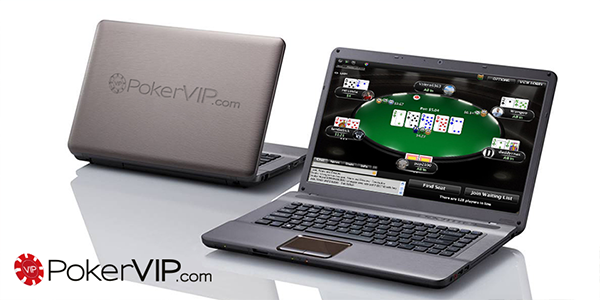Part 2 of this series on c-betting looks into some hands and analyses how we should proceed with certain types of hands on certain board textures
Part 1 of this Series on c-betting focused

on evolution of c-betting and how players' tendencies have changed over time. In this article we will consider our analysis of various c-betting spots and the thought processes that should accompany them. Please
read Part 1 first to give the article some context.
We were considering hands on the K72
QQ – This hand should have a similar feel to one of the situations we considered in the previous article. Of all the situations so far, which hand would you say QdQh is the most similar too in terms of vunerability and playability?
It would have to be the K3. There is only one over-card we fear with QQ similar to holding the Kc3c. Also the texture still holds no possible flush or straight draws meaning the hand is distinctly non-vulnerable.
However does this mean Kc3c and QdQh are equivalent on this texture? There are a number of differences. Firstly which of the two hands is most likely to improve to a strong hand by the river? QQ actually has only 2 outs with which it can improve while the Kc3c has 5. Also it's slightly less likely our opponent holds a Kx hand when we hold the Kc3c since we block some of the possible Kx combos he can have.
So what is the main difference in terms of our plan for later streets? We would start the hand in a similar way by checking back the flop as default. Assuming our opponent checks the turn we'd likely start betting with both the
K3 and the
QQ for value. However assuming our opponent leads the turn we should definitely think about calling at least once with both hands. The main difference will occur on the river. In many games we should call facing a double barrel with the Kc3c and fold facing a double-barrel with the QdQh.
Here is where we can draw our default line – weak top pair we call with twice, underpair we call turn and proceed to fold river.
This will naturally depend on the opponent's
bluffing frequencies. Vs some opponents we could likely call two streets with the QQ, while vs other opponents even calling twice with the K3 could be very close and end up being a fold. However it's nice to draw a line to help us with our default decision when facing 2 barrels after we decide to miss our cbet and check back the flop. Here is where we can draw our default line –
weak top pair we call with twice, underpair we call turn and proceed to fold river.Drawy Textures
All the examples thus far have been on a dry texture. Let's consider a few examples on a drawy
texture and elaborate on some of the principles discussed in article 1.
Flop Texture –
7910
77 – On the dry texture we briefly discussed the merits of checking back this hand. We mentioned that either would probably be reasonable as a default, but betting is slightly better. Now the situation is different and betting is mandatory regardless of our opponent's fold-to-cbet.
But what changed? Our hand is now considerably more vulnerable than it was on the K72r board. There are a number of possible straight and flush draws that could hit on the turn. Also given the drawy nature of the texture, it's simply more likely that our opponent has something that he would want to continue with.
So regardless of our opponents tendencies, the sheer vulnerability of our holding should make us tend towards betting every time.
It's also useful to think about default play on a bad turn card after we cbet. Let's imagine we cbet and the turn comes the J putting a 4-to-straight on the board. Many players are unsure what to do in this situation. Betting is obviously risky because we could so easily be dominated by this stage. However checking is not great either because we are aware that our opponent can still have some worse hands in his range and we really do not want to give a free card to these holdings.
The best option

is pretty clear when we allow ourself to think slightly
outside the box. Many people have a binary decision occurring in their brain at this stage. Either bet 2/3rds pot, or check. Neither seem that attractive, and hence a difficult decision ensues. But this really arises because many players are simply not considering all of the available options here. We are not picking between two static options, we have a whole range of different bet sizings we can potentially pick from.
So lets outline our goals – the best option will hopefully become apparent.
- Avoid giving opponent a free card. We don't want him to realise equity with his draws for free.
- Avoid isolating ourself vs his straights.
Can you see the solution? Checking fails to accomplish goal (a). Betting 2/3rds fails to accomplish goal (b). So here is an excellent situation to go for an underbet of around 1/3rd pot.
A2 – Here we have a flush-draw. Easy bet right? It's certainly true that betting is a profitable option but to suggest that we should cbet every time is an over-simplification. There are at least two reasons for us making this statement.
Firstly, as we saw earlier, the thing that makes semi-bluffing profitable is the
fold-equity. With zero fold equity, betting with a flush-draw will likely not be profitable unless some future occurrence makes up for it. In isolation it will be a losing play. So imagine we are against a
calling station who will never fold on any street – betting serves little purpose. The correct way to play flush draws against calling stations is to play passively and try to hit. Once we have hit, we can get large amounts of the stack in even if there is little in the middle already, since our opponent has a big disinclination to fold.
The second situation has application to higher level games. What do you think would happen if we were to cbet our flush-draws with 100% frequency against a very strong opponent? Our betting range wouldn't necessarily be overly exploitable because flush-draws are reasonably high-equity hands. The main issue would usually occur in situations where we didn't cbet.
If our opponents can identify our range is capped, they can make our life very difficult.
Imagine we check back the
7910 and the turn comes a spade. What can a good opponent deduce about our
range? We pretty much never have a flush-draw – we cbet those with 100% frequency. Our opponent can identify that our range is capped and make our life very difficult.
We can get away with cbetting most of our flush-draws – but if we want a varied and tough
poker strategy to use against decent opponents, it involves occasionally checking back some of our draws to help protect our turn range.
Q10 – Judging by the sheer vulnerability of this hand it should be a relatively straight-forward cbet. Checking would generally be pretty bad since there are so many turn cards which can make the situation awkward and cause us to have to give up by the river.
We have included this hand here to help dispel a common myth associated with c-betting. The myth goes something like this -
Always bet small on dry board and always bet big on drawy boards
We should associate these kind of statements with being a product of the darker ages of poker. Similar to the old advice of “always cbetting dry textures”, we should take this with a grain of salt and understand that in essence the advice is completely useless and a horrible oversimplification of c-betting principles. There are spots where we should bet large on a dry texture and very small on a drawy texture.
There are spots where we should bet large on a dry texture and very small on a drawy texture.
The problem with betting large with a weak top pair like QcTc on a drawy texture is that we can isolate ourself against high-
equity hands if we bet too big. We also should keep in mind that we may get check-raised with a reasonable frequency and have to ditch our marginal holding. In other words we are in another situation where we want to protect our hand but without putting too many of our chips at risk. Logic leads us to cbet in this example, but with a relatively small sizing.
Flop Texture – J105
A10 – Hopefully we can see the similarities here between this hand and the last one. We have a decent 2nd pair and the board texture is drawy.
We follow similar principles here and make a small c-bet for value and
protection. Our opponent check/calls OOP and the turn card is a blank
4. Our opponent checks again. What should we do here? We are actually in a very similar situation to the flop. We can go for a relatively small sizing for protection and to ensure we get called by worse hands.
Our opponent calls again and the river is a blank paired 4. What should we do here? Now we are in a situation where checking is correct. Betting for value would usually be a mistake. Remember that a lot of our value on the flop and turn came from draws and the fact that we were protecting our equity. Neither of these concepts apply on the river. If we fire the third barrel villain will usually either fold his busted draw or check-call with a stronger hand. We should check back the river and hope to see a busted draw.
89 – This hand will be heavily situational, and we definitely shouldn't assume that it is always a cbet. Cbetting can be reasonable, especially if villain has a high fold-to-cbet but there are one or two convincing arguments that indicate that checking is the strongest option.
We mentioned in
article one that we should always ask how

many streets of value our hand is worth. This is no exception here even when we hold a drawing type hand. Assuming we actually hit one of our outs, how often is our hand going to be worth three streets of value. There will be some situations where it is – specifically when the turn is a non-spade 7 and the river is a not a spade or any card which puts a higher straight out there.
Most of the time when we make our draw it will be dominated. There will be a spade out there or we won't have the nut straight. Getting paid off three streets can actually end up being problematic with this hand. It's similar if we hold something like the 67. If we make our flush, three-barrel and get called, we are very often going to be running into a higher straight.
This is not to say that c-betting the hand is incorrect, but we can certainly see there is some logic in checking back the flop and playing a 2-street pot with a hand that is generally worth 2 streets of value if it hits.
KQ – This may seem like a very strong draw, but in reality it's more than that. This draw is so strong that we can practically consider it a made hand. It's debatable whether we should consider this as a semi-bluff as opposed to betting for pure value. This hand actually has a huge 65% equity vs AJ and can also generate action from many worse draws.
Assuming we Check the Flop
So we opt to check back the flop with a certain holding. What should we do on the turn?
The first scenario is that villain checks OOP.
This is actually pretty easy to deal with. Unless our opponent is advanced and tricky we should tend towards simply betting every time.
The second scenario is that villain leads turn OOP.
Keep in mind that if we have constructed our flop checking range properly we will have the following types of hand still in our range.
- Air – We can bluff/raise this if it picks up equity, or fold.
- Draws – We occasionally check back draws with the intention of raising them vs a turn lead.
- Slowplays – This will formulate our value-raising range which we raise along-side our bluffs. We will also sometimes continue our slowplay on the turn by just calling.
- Midstrength-Hands - These we will typically call with although may become value-raises if we improve dramatically on the turn.
For more information on the second scenario listed here. Check out the article – Playing vs Turn Probes.
In part 3 of this series we will consider OOP play, in particular scenarios where we decide to check as the PFR.
 on evolution of c-betting and how players' tendencies have changed over time. In this article we will consider our analysis of various c-betting spots and the thought processes that should accompany them. Please read Part 1 first to give the article some context.
on evolution of c-betting and how players' tendencies have changed over time. In this article we will consider our analysis of various c-betting spots and the thought processes that should accompany them. Please read Part 1 first to give the article some context. is pretty clear when we allow ourself to think slightly outside the box. Many people have a binary decision occurring in their brain at this stage. Either bet 2/3rds pot, or check. Neither seem that attractive, and hence a difficult decision ensues. But this really arises because many players are simply not considering all of the available options here. We are not picking between two static options, we have a whole range of different bet sizings we can potentially pick from.
is pretty clear when we allow ourself to think slightly outside the box. Many people have a binary decision occurring in their brain at this stage. Either bet 2/3rds pot, or check. Neither seem that attractive, and hence a difficult decision ensues. But this really arises because many players are simply not considering all of the available options here. We are not picking between two static options, we have a whole range of different bet sizings we can potentially pick from. many streets of value our hand is worth. This is no exception here even when we hold a drawing type hand. Assuming we actually hit one of our outs, how often is our hand going to be worth three streets of value. There will be some situations where it is – specifically when the turn is a non-spade 7 and the river is a not a spade or any card which puts a higher straight out there.
many streets of value our hand is worth. This is no exception here even when we hold a drawing type hand. Assuming we actually hit one of our outs, how often is our hand going to be worth three streets of value. There will be some situations where it is – specifically when the turn is a non-spade 7 and the river is a not a spade or any card which puts a higher straight out there.

